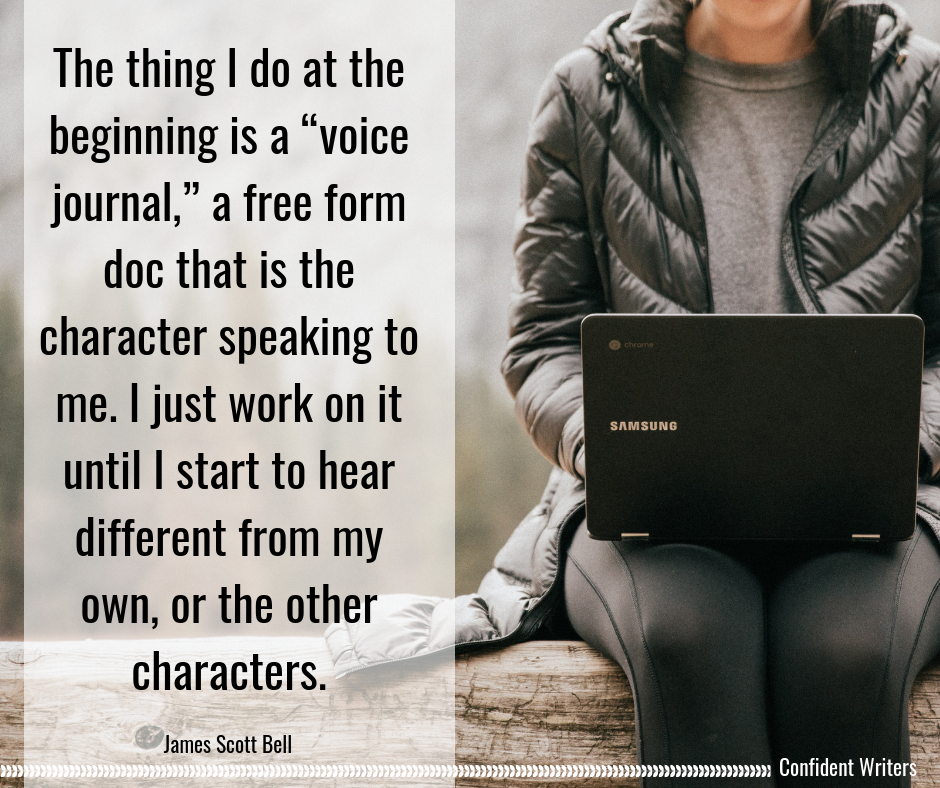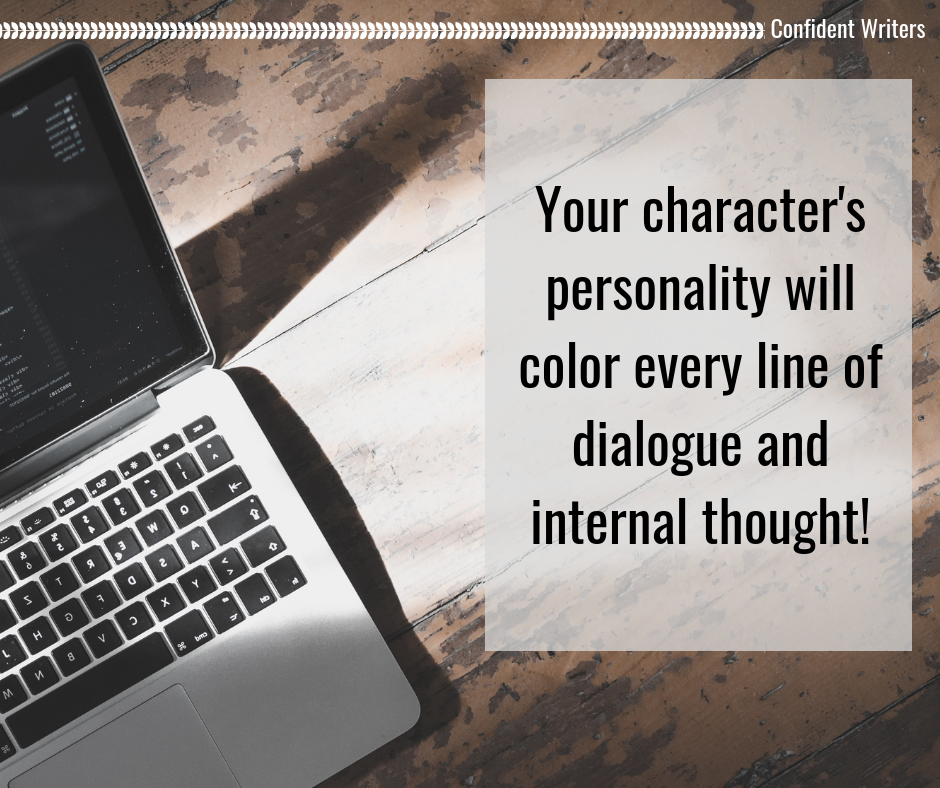
There are serious pitfalls in adhereing only to “show don’t tell” when it comes to character descriptions because there’s so much more you can do than simply catalogue a character’s appearance. The goal with any character description should be to paint a word picture for readers, but more than that — what can the description show us about the character doing the describing?
Minor character descriptions are often overlooked by busy writers, because these characters don’t influence the plot a whole lot. They’re often walk-on characters. We have to jot down their names or we forget them. However, every description should move the story forward, so if the character themselves doesn’t influence the plot or character arc then what the description says about the point of view character should!
Avoid Cataloguing Common-To-All Features
If you meet someone and they have no lips, for instance, that would definitely draw the eye no matter how hard you tried not to stare. Most of the time, however, the characters in our stories will have a few common-to-everyone features that we don’t notice unless there’s something remarkable about it.
Noting eye colour, curly hair, great boobs, or an aristocratic jawline will only tell readers what a character looks like. More important, for the sake of story, is what kind of person the main character thinks they are, because that gives readers insight into their motives and opinions. Remember, you’re not telling this story, your main character is. What would your point of view character notice, what would draw their eye?
Have Descriptions Pull Double Duty
What do I mean by pulling double duty? Let your descriptions of minor characters describe what’s important to the point of view character. Show don’t tell is great — it’s a beginning writer’s lesson. Up your game and make descriptions do more than describe a character’s appearance or dress.
What a pov character notices about someone else can serve two important story functions:
-
- it shows readers what’s important or remarkable to the point of view character based on what they notice and overlook
- shows what the pov character discerns about another character’s values and motives
Whether the pov character’s evaluation is accurate, whether they are a reliable narrator, can be fleshed out in another part of the story.
Examples of Minor Character Descriptions
“Marguerite was dark, greasy skinned and morose-looking, wearing a shiny purple dress that appeared to have been bought when she was a little thinner.” The Silkworm, Robert Galbraith (a pseudonym for J.K. Rowling)
The point of view character here is Strike, an army veteran turned private detective. How does Strike feel about this woman presented to him as a potential love interest? We get to see Marguerite as Strike perceives her — we see her through his perspective.
What Strike notices shows us many things not just about the person he’s observing and evaluating, but about his character as well. From this we get a good guess about what’s important to him and what he’s avoiding. A woman wearing a dress a little too small is trying too hard, she wants to be something she’s not — this woman would need reassurance and comfort to find her confidence. Is he the kind of guy to offer a woman those things?
Her dress isn’t lavender, periwinkle or plum — it’s purple. Maybe this makes him a stereotypical male and maybe he’s the kind of person who doesn’t concern himself with variations – it is what it is.
He doesn’t notice if Marguerite’s hair is curly or if she has long legs. Do you get the sense that even if she possessed features he found attractive, he still wouldn’t be interested based on what he’s assumed about her character?
“Catherine is one of only four women in the class of ’31 and her cruelty knew no bounds. I’ve lost track of all the times I’ve thought Oh God, oh God, she’s finally going to let me, only to be hit in the face with Dear God, she wants me to stop NOW?” Water For Elephants, Sara Gruen
Jacob is the point of view character here. This is the first time we hear of Catherine. Jacob doesn’t tell us what Catherine looks like, maybe it doesn’t matter to him. He feels that Catherine is a tease and a flirt and has decided she finds pleasure in playing these games. What does it show us about him that he continues to play her games knowing the likely outcome — does that make him desperate, a fool, a glutton for punishment, an optimist? And what does this show us of his opinion of women in general — his ideas about consent and other things? This is a guy we can cheer for, right.
“The Windward Spirit, the store boat for all the light stations along that part of the coast, was an old tub, but trusty as a cattle dog, Ralph Addicott said. Old Ralph had skippered the vessel for donkey’s years, and always boasted he had the best job in the world.” The Light Between Oceans, M. L. Stedman
Tom is the point of view character here. Maybe it’s just me, but every time I read this I can’t help but think that the description of the boat is actually a description of Old Ralph: old, well-seasoned, but trustworthy. Tom’s perception is that Ralph won’t let him down. Now, keep in mind that Tom doesn’t actually know Old Ralph, they’ve only just met.
What does this tell us of Tom? Perhaps he’s an exceptional judge of character? Moreso, Tom is the kind of person who likes to give everyone the benefit of the doubt. He doesn’t like to think poorly of anyone or assume anyone has unpure motives. You can bet this bit of character insight is important later on in the story.

What Function Does The Description Serve For Your Story?
In each of these descriptions by main characters about minor characters, they serve the story by showing readers insight into the protagonist’s goals and opinions. We get to see what’s important to them and how they see the world. In each of these stories, knowing this about the main characters provides foreshadow.
These small descriptions build upon one another like blocks in a foundation. A reader, an intelligent reader, may be able to say what kind of person the main character is — what they like about them, but they won’t tell you why they think that. These are subtle descriptions of character that readers pick up on even if they can’t articulate how they’ve come to their opinions about the protagonist.
Come back for Part 2 where we look at describing main characters to readers.
Know what function your description needs to or could serve in your story. Don’t let a description only serve to tell readers what someone looks like.
Been told you should learn Deep Point Of View? Had an editor or critique partner tell you to “go deeper” with the emotions in your fiction? Looking for a community of writers seeking to create emotional connections with readers? Check out the Free Resource Hub and then join the Going Deeper With Emotions In Fiction Facebook group.

Comments (2)